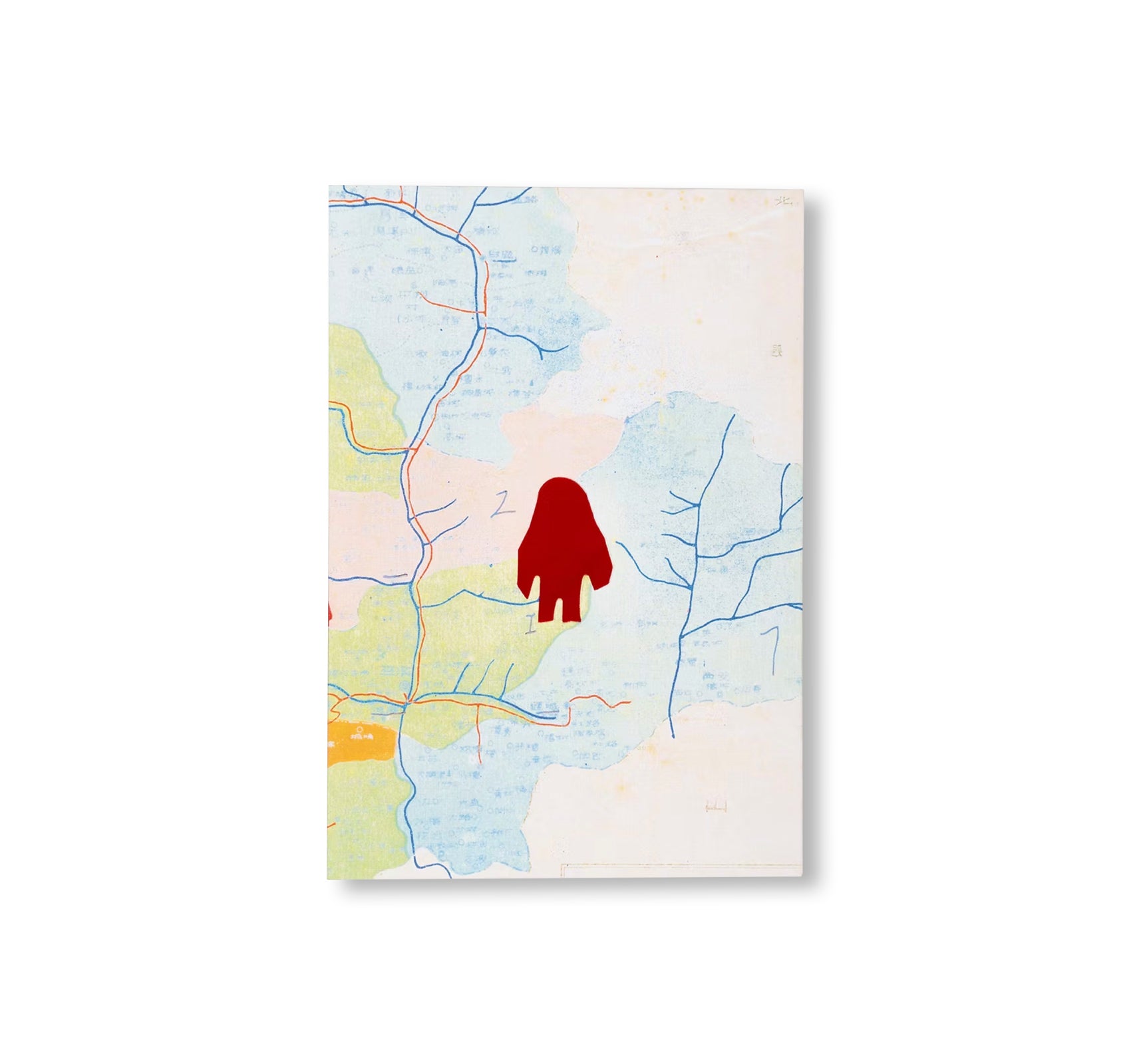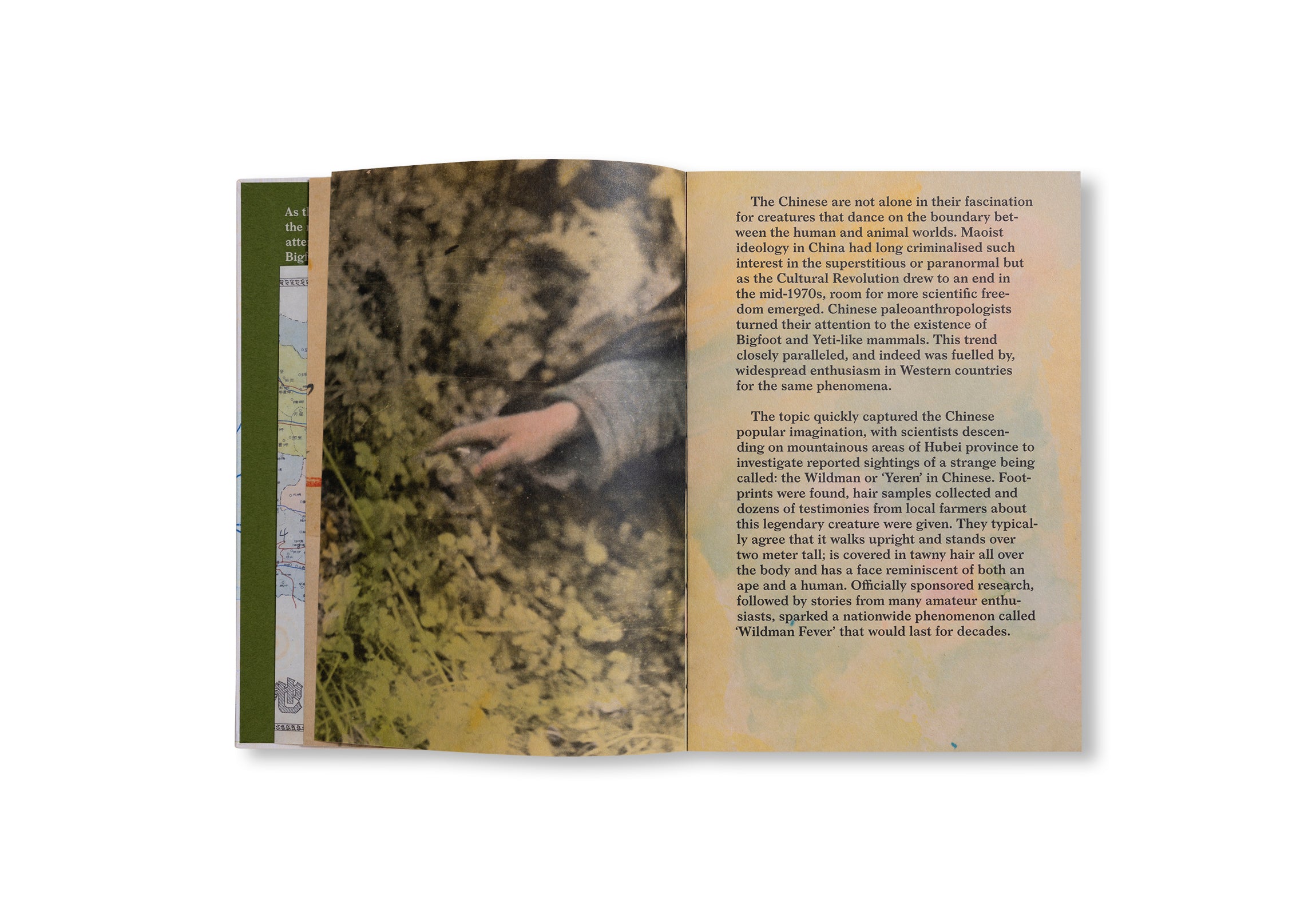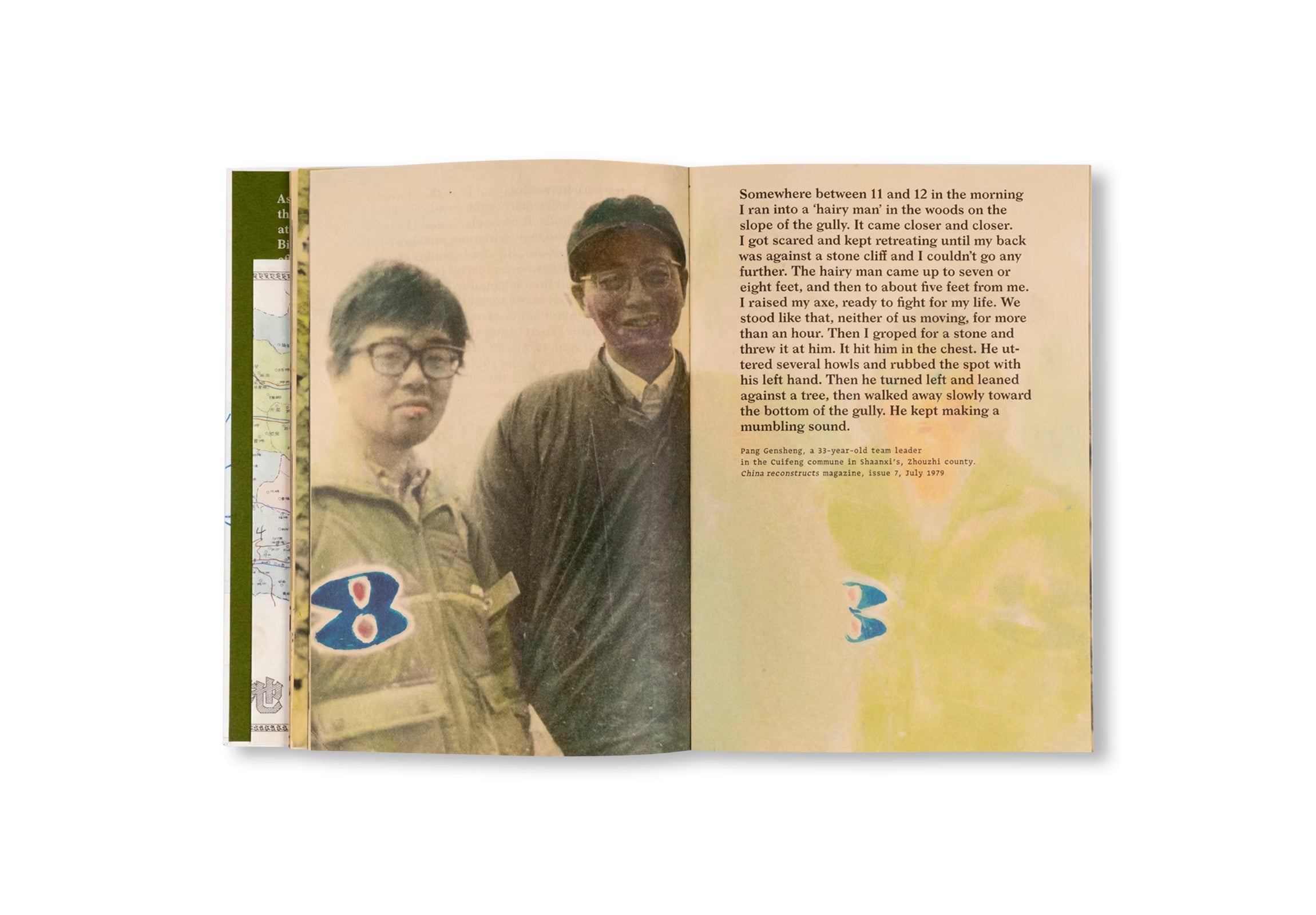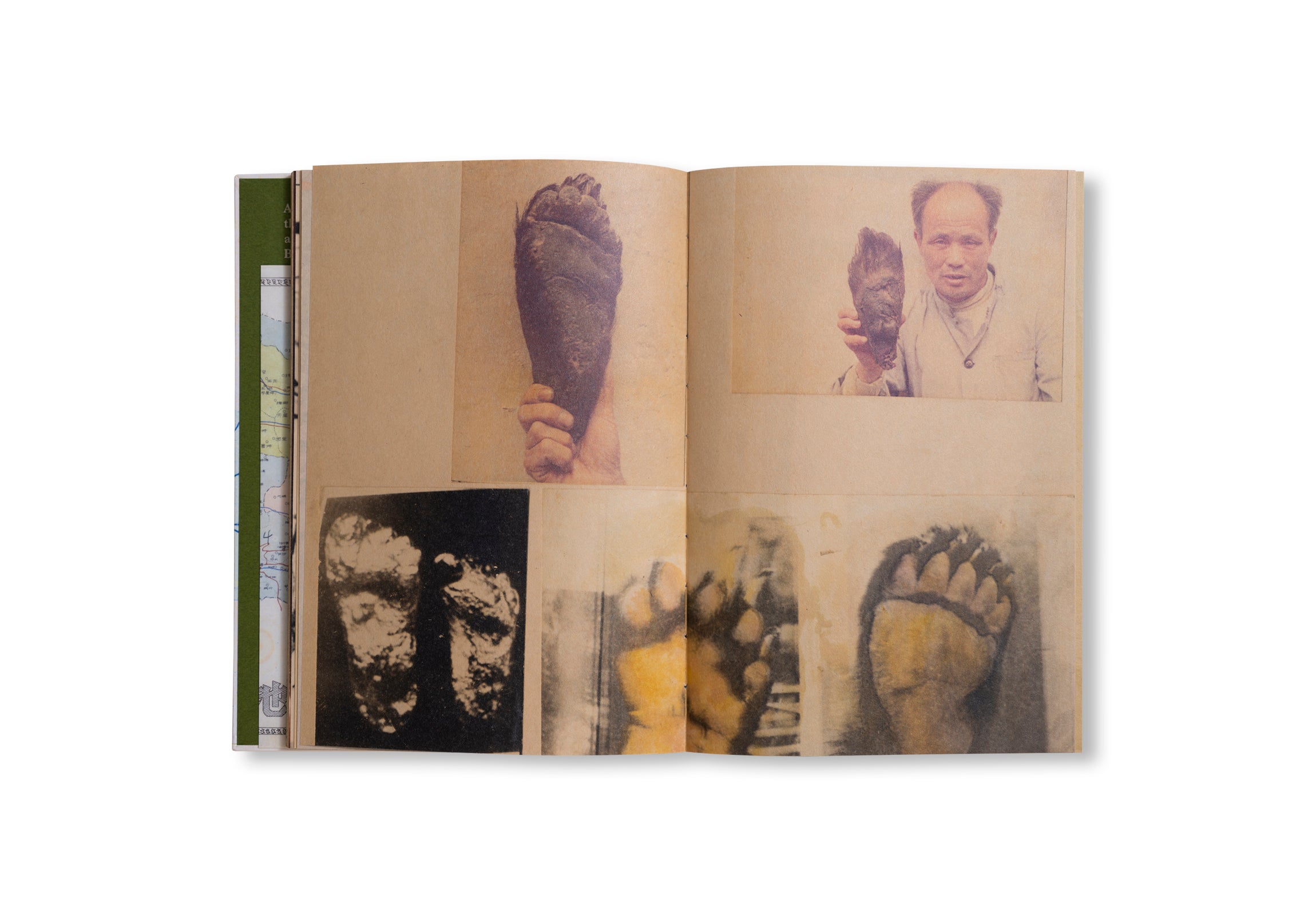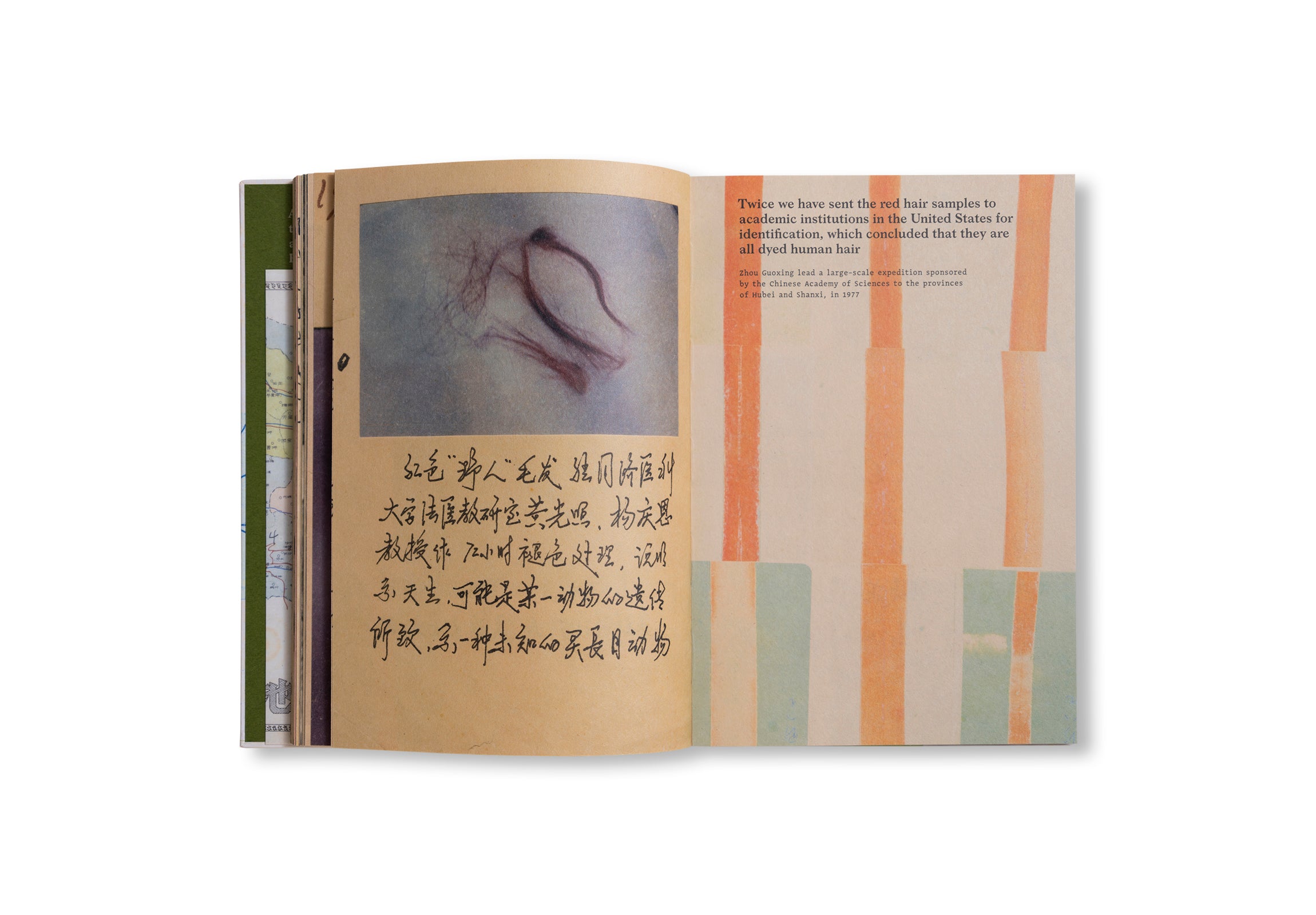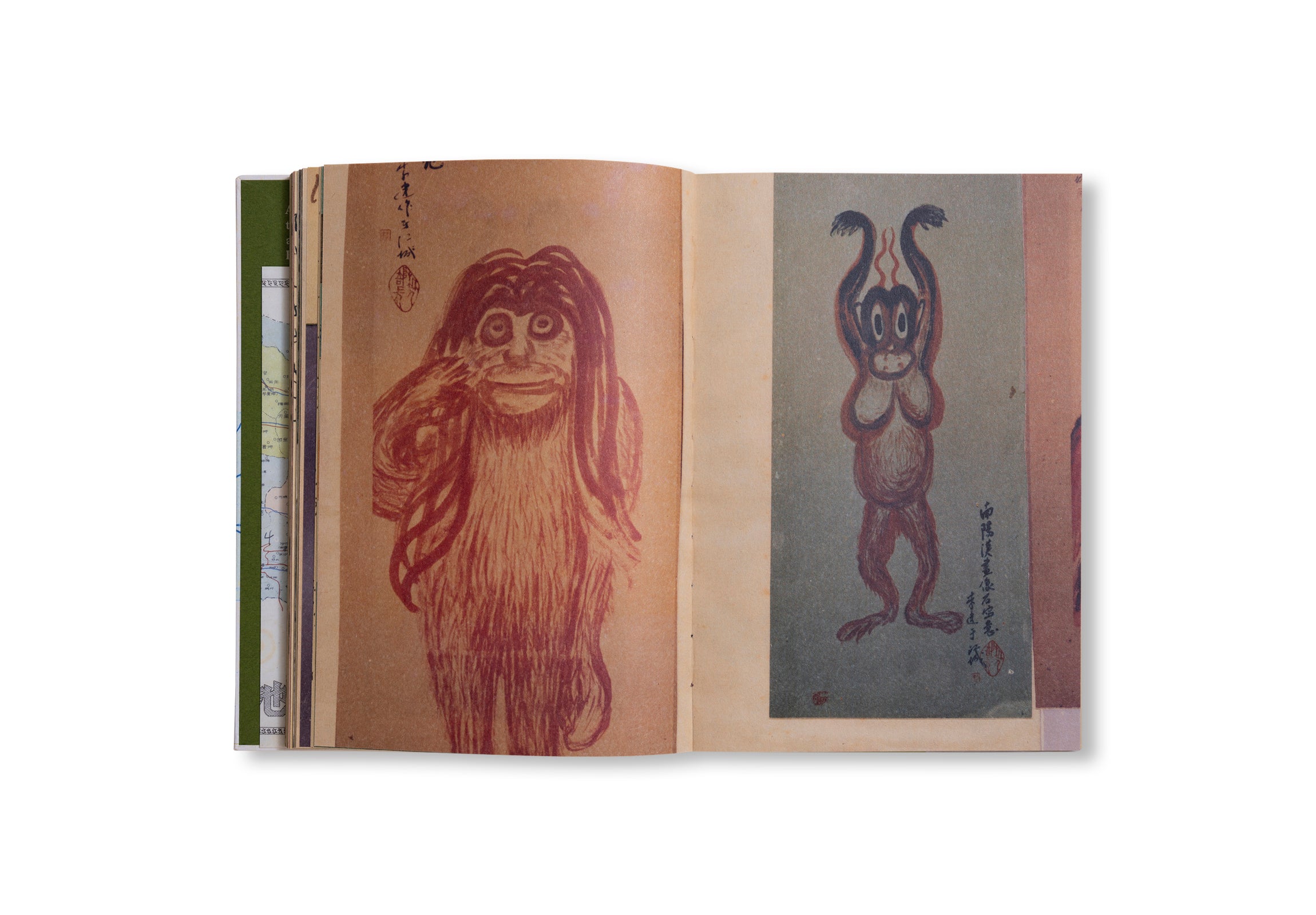WILDMAN FEVER! by Ruben Lundgren
北京を拠点に活動するオランダ人フォトグラファーでキュレーター、ルーベン・ランドグレン(Ruben Lundgren)の作品集。
人間と動物の世界の境界で踊るような生物への関心は、中国人に限ったものではない。中国の毛沢東主義イデオロギーは長年、こうした迷信や超常現象への関心を犯罪化してきたが、1970年代半ばに文化大革命が終焉を迎えると、科学的な自由の余地が生まれた。中国の古人類学者たちはビッグフットやイエティに似た哺乳類の存在に注目し始めた。この傾向は、西洋諸国で同じ現象に対する熱狂が広まっていたことと密接に並行し、それに後押しされる形で進展した。
この話題は瞬く間に中国の一般大衆の想像力を捉え、科学者たちが湖北省の山岳地帯に集結し、ワイルドマン、または中国語で「野人」と呼ばれる奇妙な生物の目撃報告を調査した。足跡が発見され、毛髪サンプルが採取され、この伝説の生物について地元農民から数十件の証言が寄せられた。証言者たちは概ね、それが直立歩行し身長は2メートル以上あること、全身が黄褐色の毛で覆われていること、顔は類人猿と人間の両方を彷彿とさせる点で一致している。政府主導の研究に続き、多くのアマチュア愛好家たちの報告が相次いだことで、「ワイルドマン・フィーバー」と呼ばれる全国的な現象が数十年にわたり続いた。
The Chinese are not alone in their fascination for creatures that dance on the boundary between the human and animal worlds. Maoist ideology in China had long criminalised such interest in the superstitious or paranormal but as the Cultural Revolution drew to an end in the mid 1970s, room for more scientific freedom emerged. Chinese paleoanthropologists turned their attention to the existence of Bigfoot and Yeti-like mammals. This trend closely paralleled, and indeed was fuelled by widespread enthusiasm in Western countries for the same phenomena.
The topic quickly captured the Chinese popular imagination, with scientists descending on mountainous areas of Hubei province to investigate reported sightings of a strange being called: the Wildman or ‘Yeren’ in Chinese. Footprints were found, hair samples collected and dozens of testimonies from local farmers about this legendary creature were given. They typically agree that it walks upright and stands over two meter tall; is covered in tawny hair all over the body and has a face reminiscent of both an ape and a human. Officially sponsored research, followed by stories from many amateur enthusiasts, sparked a nationwide phenomenon called ‘Wildman Fever’ that would last for decades.
